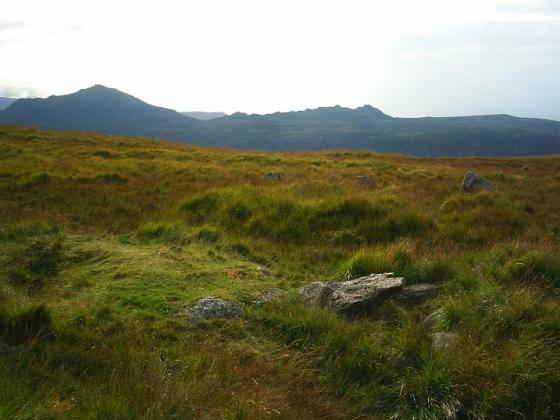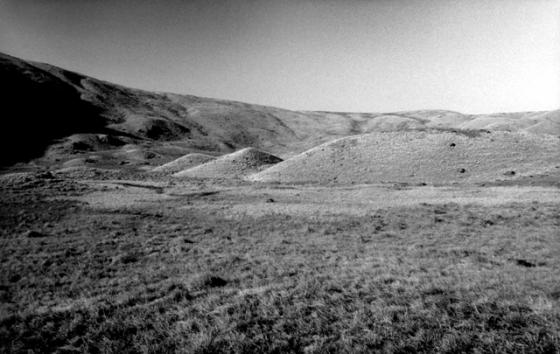This is a huge Bronze Age cairn, which, typically, for Cumbria, has been reduced down by fellwalkers, who, in their ignorance, have done what they do: mess about with summit cairns for their own shelter.
How ignorant “modern” man is. From the middle ages onwards we have helped to destroy numerous ancient monuments, and, on the Cumbrian fells, are still free to do so.
As Francis Pryor writes about in his outstanding book “Britain BC”, in the uplands of Britain the barrows change from earthen or megalithic to those made of stones: the cairns.
The cairns don’t seem to be protected very well. In fact, in reality, they don’t seem to have any protection. The archaeological records of these places in Cumbria are vague or non existant. Who cares about these remote cairns, which is what they all sem to be?
It’s a lonely summit – you won’t meet anyone up here. From the cairn the views are outstanding. On a clear day Scotland, North Wales, and the Isle of Man can be seen, and on exceptional days the mountains of Ireland have been claimed to be in view.
The Stockdale Moor (Sampson’s Bratfull) site is seen well from here, as is the modern eyesore of Sellafield (formerly Calder Hall, Windscale, etc.). Ancient and modern. Also, there is a good view of Burnmoor Tarn, and the cairn at the northern end, Maiden Castle. It makes me think of sightlines.














































